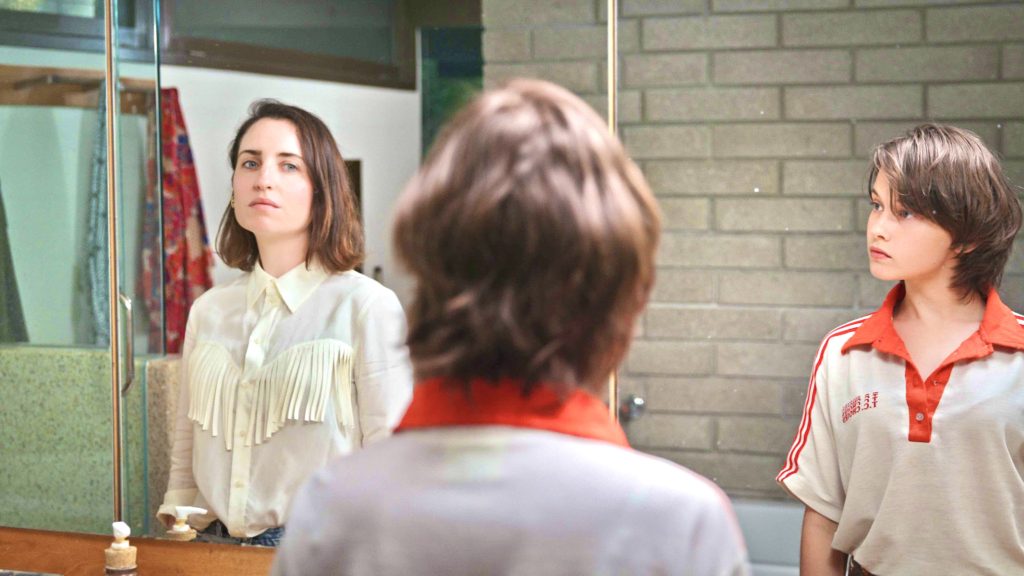Zoe Lister-Jones is an actor, writer, director and producer. She recently wrote, directed, and produced “The Craft: Legacy.” Lister-Jones made her directorial debut with “Band Aid,” which she also wrote, produced, and starred in. “Band Aid” was nominated for the Grand Jury Prize at the 2017 Sundance Film Festival and made history as the first feature film made with an all-female crew. The “Life in Pieces” alumna’s other credits include “Consumed” and “Breaking Upwards.”
“How It Ends” is screening at the 2021 Sundance Film Festival, which is taking place online and in person via Satellite Screens January 28-February 3. The film is co-directed by Daryl Wein.
W&H: Describe the film for us in your own words.
ZLJ: “How It Ends” is the story of Liza, who, accompanied by her metaphysical younger self, is trying to make it to the last party on the last day on Earth, and runs into an eclectic cast of characters along the way.
W&H: What drew you to this story?
ZLJ: Daryl Wein and I started conceiving of this story pretty early on in quarantine. We were facing so many unprecedented fears, and living in this apocalyptic landscape. We were both doing a lot of inner child work in therapy, and this film served as a way for us to process a lot of what we were feeling, while also serving as a time capsule of this singular moment in history.
W&H: What do you want people to think about after they watch the film?
ZLJ: I hope they feel less alone in their aloneness. And I hope they will have experienced a bit of levity, without denying the impact of what we are all going through.
W&H: What was the biggest challenge in making the film?
ZLJ: Shooting in quarantine was challenging on a number of levels. The crew was quite small, so Daryl and I were wearing a lot of hats.
For many of our actors, this was their first time acting in something since quarantine began, so we were all entering a creative realm from a very vulnerable place, which was challenging but also quite freeing.
W&H: What inspired you to become a filmmaker?
ZLJ: My mom is a video artist, and she is my biggest inspiration. She started an all-women film collective in the ’70s called Reel Feelings. The portrait of the collective hung on my wall as a child and showed me what was possible.
W&H: What’s the best and worst advice you’ve received?
ZLJ: As an actor, the worst advice I received was from David Mamet, who gave a guest class when I was in college and told me I shouldn’t be in school because my shelf life was short as a viable actress.
The best advice was from an amazing producer named Alix Madigan who told me I should direct a movie. Sometimes that’s all it takes.
W&H: What advice do you have for other women directors?
ZLJ: Go make the thing. Be open to learning from constructive criticism, but don’t let the gatekeepers stand in your way.
W&H: Name your favorite woman-directed film and why.
ZLJ: I love Miranda July’s “Me and You and Everyone We Know.” It was seminal for me as a young woman. Her voice is so singular: she wasn’t afraid to break from form, to take risks, to imbue heart and depth into wry comedy. She wore all the hats, and created art that was so deeply authentic, and therefore so resonant.
W&H: How are you adjusting to life during the COVID-19 pandemic? Are you keeping creative, and if so, how?
ZLJ: Well, I made “How It Ends” with Daryl during the pandemic. I also completed post on “The Craft: Legacy,” a film I wrote and directed for Blumhouse, during the pandemic, and released it during the pandemic as well. So I’ve been grateful to stay creative. It’s been a lifeline.
W&H: The film industry has a long history of underrepresenting people of color onscreen and behind the scenes and reinforcing — and creating — negative stereotypes. What actions do you think need to be taken to make Hollywood and/or the doc world more inclusive?
ZLJ: I think it starts with those in charge of hiring stepping outside the practice of working with artists and crew members they have hired in the past. It means taking chances on artists who may have less on their resume than those in charge may be comfortable with, but also embracing the inclusion and mentorship of new voices. Many times, such chances are taken on white men, so it’s also about facing the internal biases that create such a stubborn double standard.







